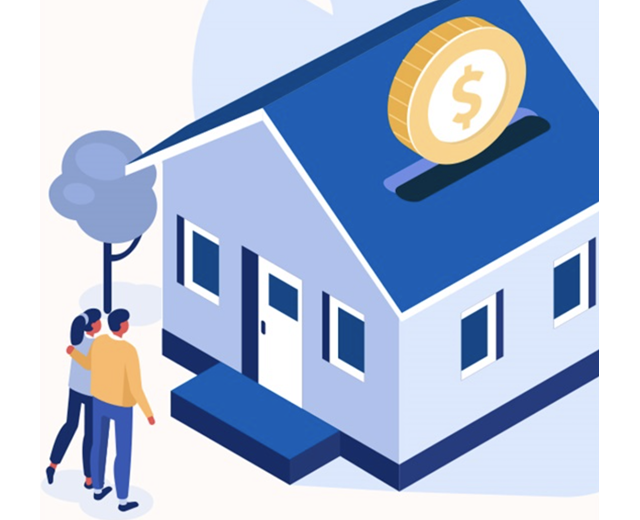Why Conventional Mortgage Loans Are a Smart Selection for Stable Funding
Why Conventional Mortgage Loans Are a Smart Selection for Stable Funding
Blog Article
The Vital Variables to Consider When Deciding On In Between Fixed-Rate and Adjustable-Rate Home Mortgage Financings
When assessing home mortgage alternatives, customers encounter a crucial decision in between adjustable-rate and fixed-rate loans, each presenting unique advantages and possible pitfalls. Key considerations such as rates of interest stability, predictability in month-to-month settlements, and the effects of possible rate adjustments can significantly influence long-lasting economic wellness. In addition, comprehending the awaited period of homeownership and the general price of borrowing can form one's method. As these aspects link with specific economic circumstances and take the chance of resistance, the effects of this option may not be as simple as they seem. What nuances should be focused on in this critical decision-making procedure?
Rates Of Interest Stability
When selecting a mortgage, comprehending interest rate stability is critical for notified decision-making. Interest prices can dramatically impact the overall price of a home loan, and identifying the nature of these rates is vital for customers.
On the other hand, adjustable-rate home mortgages (ARMs) begin with lower first prices that might transform periodically based upon market problems. While this can result in lower payments originally, it also presents unpredictability, as customers might encounter increased repayments if rates of interest rise. For those thinking about an ARM, it is vital to evaluate the possibility of rate changes, the potential for repayment increases, and the size of the first fixed-rate period.
Inevitably, the selection in between adjustable-rate and fixed-rate home mortgages hinges on individual risk resistance and economic situations. Understanding rates of interest stability assists borrowers make notified decisions that straighten with their long-term economic goals.
Month-to-month Payment Predictability
While consumers commonly focus on passion price security, the predictability of regular monthly settlements is equally essential in the mortgage choice process (Conventional mortgage loans). Regular monthly settlement predictability plays a critical role in budgeting and financial preparation, as it directly influences a house owner's capital and overall economic health
Fixed-rate home loans offer a consistent month-to-month payment throughout the life of the financing, enabling debtors to anticipate and plan their costs effectively. This security can be specifically helpful for new property buyers or those on a set earnings, as it removes the uncertainty linked with varying settlements.
Conversely, adjustable-rate home mortgages (ARMs) generally include lower initial settlements that can change gradually, bring about potential variability in month-to-month obligations. While at first enticing, this changability can complicate monetary preparation, specifically if borrowers do not represent future price changes.
Potential Price Adjustments
In the realm of variable-rate mortgages (ARMs), possible rate modifications stand for a considerable factor that consumers have to very carefully consider. Unlike fixed-rate home loans, where the rate of interest stays the same for the life of the loan, ARMs are defined by fluctuating rate of interest that are tied to market indices. This variability can result in considerable adjustments in month-to-month payments, impacting the borrower's monetary preparation and budgeting.
Customers have to be conscious of the margin and index used to compute these modifications, as they directly More Bonuses affect future rate of interest prices. Additionally, ARMs frequently consist of caps that restrict how a lot the passion price can raise look at this web-site at each change and over the life of the lending, which can supply some level of security versus extreme rate hikes.
Comprehending these potential changes is essential for customers, as they directly affect lasting repayment responsibilities. Consequently, examining personal economic circumstances and risk tolerance is vital when deciding whether an ARM aligns with one's financial goals.
Financing Term Factors To Consider
Lending term factors to consider play a pivotal role in the decision-making procedure for debtors choosing between fixed-rate and adjustable-rate home loans. The length of the funding term dramatically influences monthly settlements, passion prices, and total economic preparation.

Inevitably, customers must analyze their individual situations, monetary goals, and market problems when evaluating the ramifications of car loan term selections within each home loan type.

Overall Expense of Loaning
Fixed-rate mortgages supply predictable regular monthly repayments, as the rate of interest rate stays continuous throughout the lending term. This predictability can lead to lower total costs, specifically in a secure or decreasing passion rate atmosphere.
Alternatively, variable-rate mortgages (ARMs) commonly start with lower preliminary rates, leading to lowered ahead of time expenses. However, these rates can increase after a first duration, bring about potentially greater long-term expenses. Consumers have to think about the regularity and level of price changes, index as well as the general financing period, to properly evaluate the monetary implications.
Additionally, the general price of borrowing includes not only interest prices but additionally costs and other linked expenses, such as shutting costs and insurance (Conventional mortgage loans). For that reason, when reviewing mortgage alternatives, consumers must conduct a thorough expense analysis over the life of the lending. By doing so, they can make an enlightened decision that straightens with their economic objectives and run the risk of resistance
Verdict
Rate of interest price stability and regular monthly payment predictability are vital for efficient budgeting, while the capacity for rate adjustments in ARMs presents economic unpredictability. Additionally, the anticipated duration of homeownership and the overall cost of borrowing, including rate of interest rates and associated charges, must align with specific monetary circumstances and take the chance of tolerance.
Secret considerations such as interest price security, predictability in monthly repayments, and the implications of prospective rate modifications can dramatically influence lasting monetary health and wellness. Rate of interest rates can considerably impact the overall cost of a mortgage, and identifying the nature of these rates is essential for borrowers. Unlike fixed-rate home mortgages, where the passion price stays unchanged for the life of the car loan, ARMs are characterized by fluctuating interest prices that are connected to market indices. Furthermore, ARMs frequently include caps that restrict exactly how much the passion rate can enhance at each adjustment and over the life of the lending, which can offer some degree of protection versus radical rate walks.
Interest price security and regular monthly settlement predictability are extremely important for effective budgeting, while the possibility for price changes in ARMs presents economic unpredictability.
Report this page